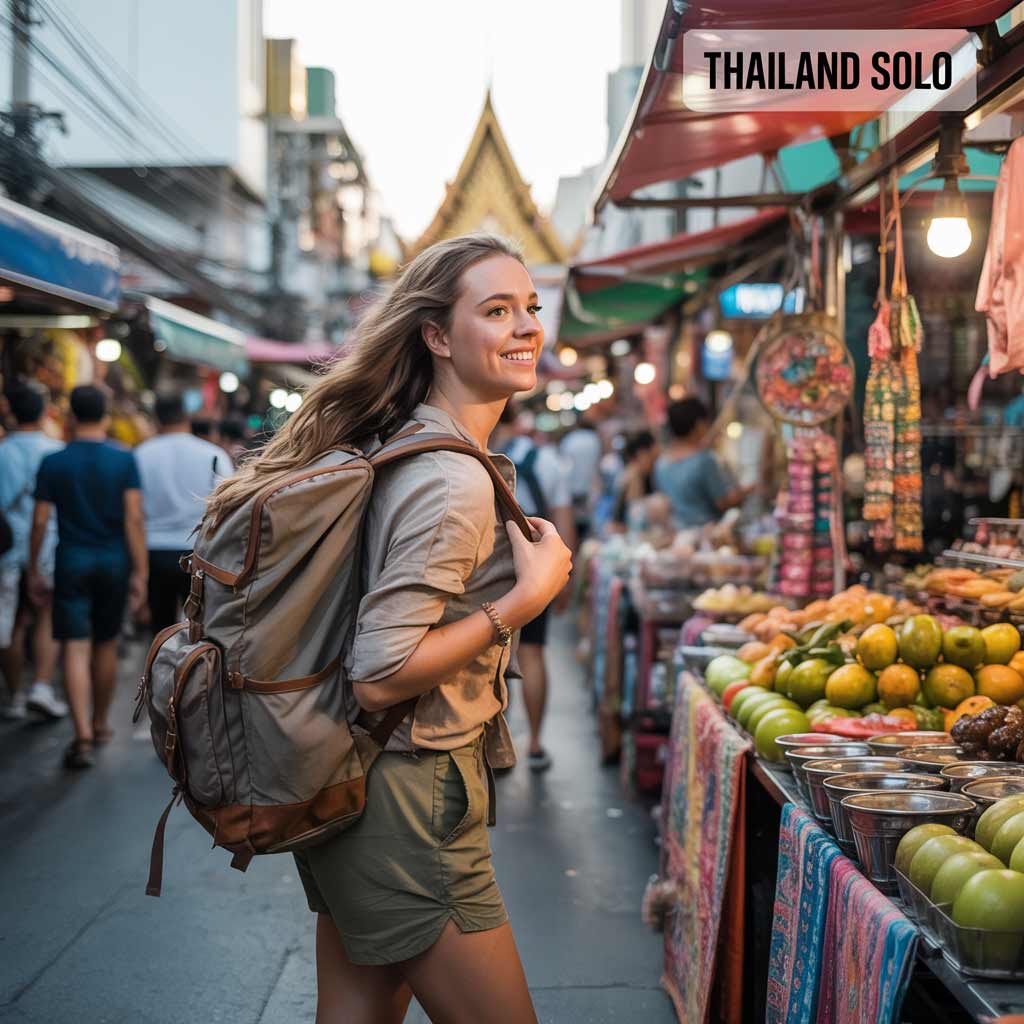Solo Travel Guide to Thailand: Tips for a Safe and Memorable Trip
Hey there! I’m Emma Collins, and if you’re reading this, you’re probably thinking about taking the plunge into solo travel in Thailand. Trust me, I get it—Thailand was my first solo trip, which completely changed how I see the world. From the vibrant streets of Bangkok to the peaceful beaches of Phuket, Thailand offers a perfect blend of adventure and relaxation.
Did you know that Thailand is one of the world’s most popular solo travel destinations? It’s safe, affordable, and rich in culture, making it the ideal spot for first-timers and experienced travellers. In this guide, I’ll share my tips and tricks to help you navigate Thailand independently. So, whether you’re dreaming of exploring temples, trying local street food, or simply soaking in the natural beauty, I’ve got you covered! Let’s get started on your unforgettable adventure.
Why Thailand is Perfect for Solo Travellers
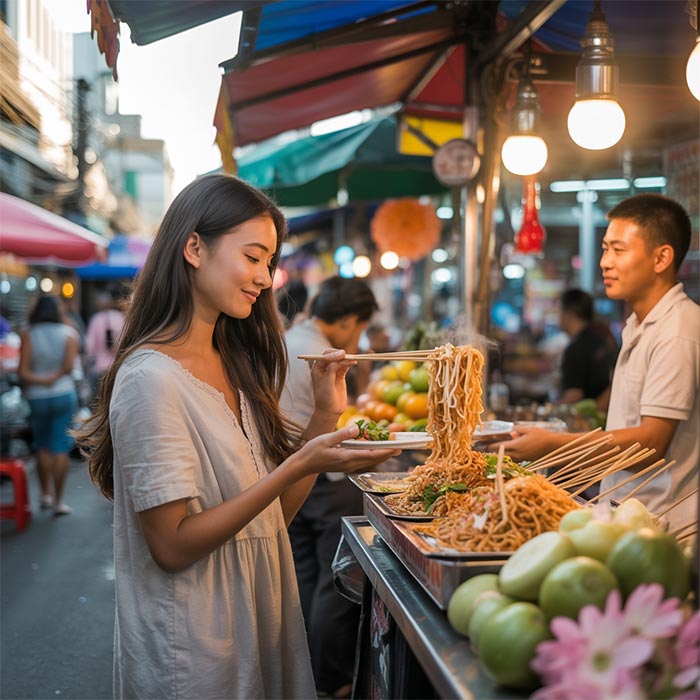
If you’re considering travelling solo, Thailand is one of the best places to start. As someone who has ventured through this incredible country alone, I can tell you it’s welcoming, safe, and full of unforgettable experiences. Whether you’re a first-time solo traveller or an experienced adventurer, Thailand has something that will make you feel at home while offering a sense of thrill and discovery.
First, the locals. Thai people are known for their warmth and hospitality. You’ll often hear the phrase “The Land of Smiles,” which couldn’t be more true. No matter where you go, you’ll find people eager to help, whether giving directions or sharing a smile over coffee. This makes solo travel much easier and more enjoyable.
Another great thing about Thailand is its affordability. You don’t have to break the bank to enjoy the sights, food, and experiences here. From budget-friendly street food to cheap hostels, your money will go a long way. Plus, the transportation is easy to navigate, and you’ll find plenty of options for getting around—a tuk-tuk ride, a boat trip, or a local train.
Lastly, Thailand is diverse. Whether you want to wander through bustling cities, visit ancient temples, relax on beautiful beaches, or hike through lush jungles, the country offers all that and more. You can easily switch between different environments, all while staying safe and comfortable. It’s a solo traveller’s paradise!
Top Solo Travel Destinations in Thailand
Now, let’s talk about where to go. Thailand is filled with diverse regions, each offering something unique. As someone who’s visited many of these places solo, I’ll take you through my favourite destinations that are perfect for solo travellers.
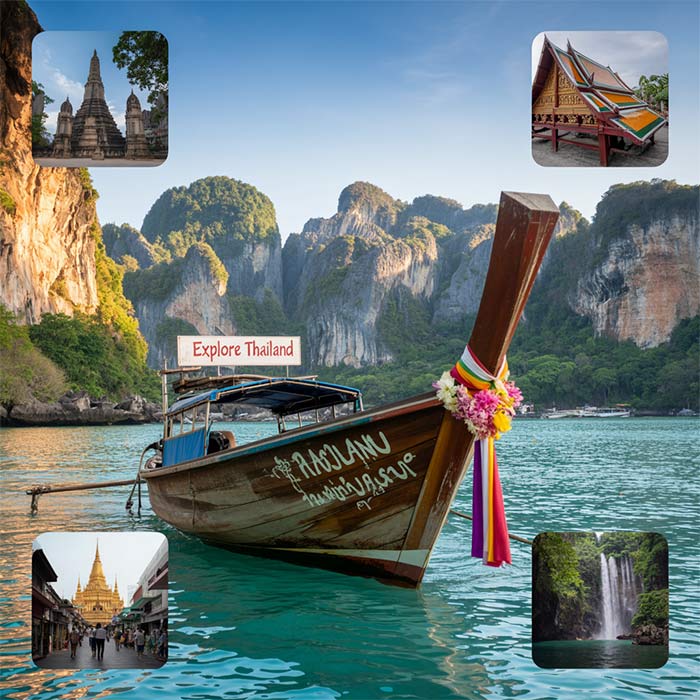
Bangkok
Bangkok is a city that will either overwhelm you or excite you—probably a little of both! It’s a chaotic, vibrant place where tradition and modernity collide in the best way possible. For solo travellers, Bangkok offers endless activities, and trust me, you’ll never get bored.
Start your journey with the iconic temples—Wat Pho and Wat Arun are must-sees, perfect for a quiet moment of reflection. The Grand Palace is a bit more crowded, but worth visiting.
Explore the bustling markets and shopping malls like Chatuchak and MBK if you want something more modern. Whether you’re into fashion, food, or gadgets, there’s something for everyone. And don’t forget the street food—Bangkok is famous for its delicious, affordable dishes. Try the pad Thai or mango sticky rice from a vendor; you’ll thank me later.
For nightlife, Bangkok is unbeatable. It’s a great place to meet other people as a solo traveller. From rooftop bars with jaw-dropping views to lively night markets, there’s always a way to unwind after a busy day of Sightseeing. Plus, it’s easy to meet other solo travellers who are also out and about exploring the city.
Chiang Mai
If you’re looking for a slower pace but still want plenty to do, Chiang Mai is your spot. Nestled in northern Thailand, Chiang Mai feels more like a blend of nature and culture. It’s the perfect destination for those looking to explore temples, visit lush jungles, and even participate in traditional Thai activities.
One of my favourite things about Chiang Mai is the abundance of temples. Wat Phra That Doi Suthep is a must-visit—it’s located on a mountain with stunning views of the city. The peaceful atmosphere makes it an excellent spot for solo travellers who want to reflect and find inner peace.
Chiang Mai is also famous for its night markets. If you’re a foodie, you’ll love strolling through these markets and sampling local delicacies. The best part? It’s not as crowded as Bangkok, so you can enjoy a more laid-back, authentic experience.
For those looking for adventure, Chiang Mai offers excellent opportunities to trek through jungles, visit elephant sanctuaries, or even try traditional cooking classes. Whether you want to meet fellow solo travellers or enjoy some peaceful time, Chiang Mai strikes the perfect balance.
Phuket
If you dream of beautiful beaches and a laid-back vibe, Phuket is the perfect destination for your solo trip. I remember arriving there and immediately feeling the calming atmosphere—something about the ocean breeze and the soft waves just makes you want to relax.
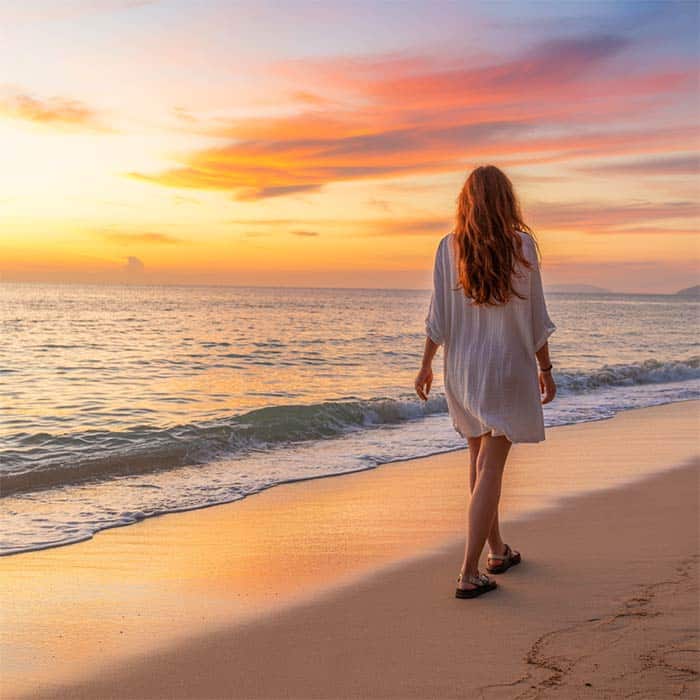
But there’s more to Phuket than just its beaches. While you can spend your days sunbathing on Patong Beach or lounging by the crystal-clear water, Phuket offers some amazing solo travel experiences. For those who enjoy adventure, you can try snorkelling, diving, or hiking up to the Big Buddha for an incredible panoramic island view.
Phuket also has a lively nightlife scene, a great way to meet fellow solo travellers. I spent evenings wandering through the night markets, trying delicious local dishes like satay and spicy seafood, and soaking in the vibrant energy of the place.
What I love about Phuket is how easy it is to balance relaxation and adventure. Whether you want to chill out or explore, there’s something for everyone.
Ayutthaya
For a taste of history and culture, don’t miss Ayutthaya. It’s just a short day trip from Bangkok. It is the perfect destination to explore ancient ruins and learn about Thailand’s fascinating past.
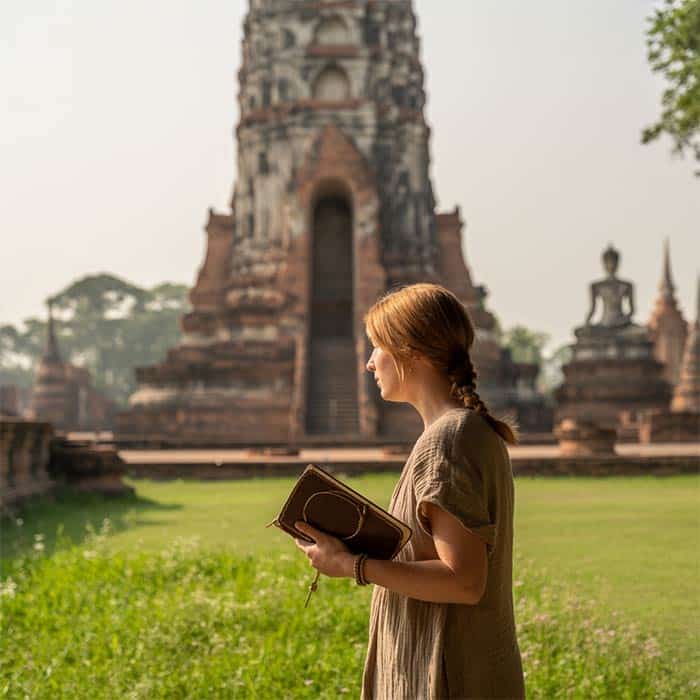
Ayutthaya was once the capital of the Kingdom of Siam, and the historical park is filled with beautiful temples and giant Buddha statues. Exploring the ruins on foot or by bike felt like returning in time. The peacefulness of the area was the perfect break from Bangkok’s busy city life.
If you’re a history lover, Ayutthaya’s stories and stunning architecture will captivate you. It’s a great spot for solo travellers who enjoy learning and reflecting while walking through history.
Other Notable Destinations
While Bangkok, Chiang Mai, Phuket, and Ayutthaya are must-see places, plenty of other spots in Thailand are perfect for solo travellers looking for something different.
Pai: This small mountain town is a hidden gem known for its relaxing vibe, gorgeous nature, and bohemian atmosphere. If you’re into yoga or want to take it slow, Pai is a fantastic choice. It’s small, safe, and easy to explore on your own.
Koh Samui: Another beautiful island destination, Koh Samui offers a mix of relaxation, adventure, and luxury. From yoga retreats to beach parties, Koh Samui has something for everyone.
Kanchanaburi: For those interested in history and nature, Kanchanaburi is home to the famous Bridge over the River Kwai and the Erawan National Park. The park has stunning waterfalls and hiking opportunities. It’s a peaceful spot where you can reflect and connect with nature.
Thailand is a country full of hidden gems and unique destinations, so you will have an unforgettable experience wherever you go. The best part about solo travel here is that you can easily pick and choose your own adventure based on what you’re in the mood for—whether that’s history, nature, beaches, or culture.
Safety Tips for Solo Travellers in Thailand
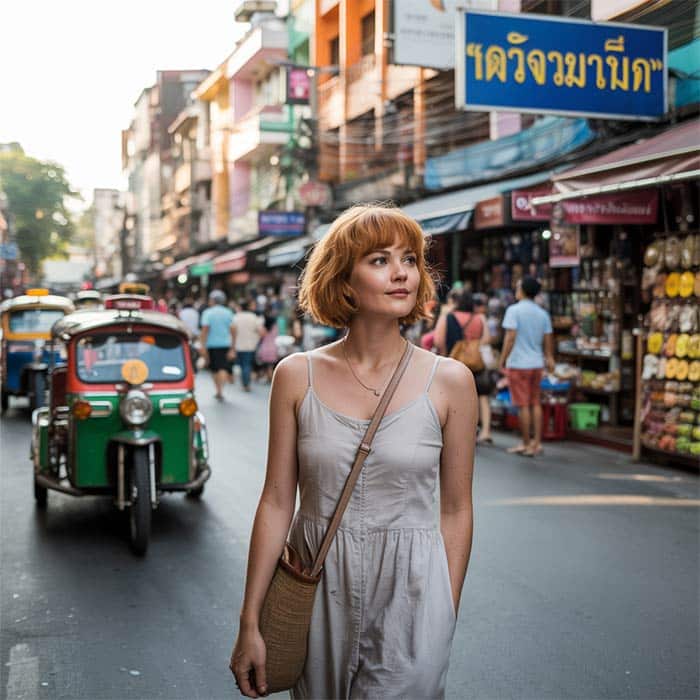
When I first travelled solo to Thailand, one of my biggest concerns was safety. But after spending time in the country, I learned that Thailand is generally a very safe destination for solo travellers. Like any place, it’s essential to stay aware and take simple precautions. Here are some tips to help you stay safe and enjoy your trip to the fullest.
General Safety
First and foremost, always trust your instincts. If something doesn’t feel right, it isn’t. I’ve found that Thai people are incredibly friendly. However, you should stay alert in crowded areas, especially when dealing with money or valuables.
When you’re out exploring, keeping your belongings close to you is a good idea. For extra peace of mind, use a crossbody bag with a zipper or even a money belt. I’ve learned to avoid carrying too much cash—just enough for the day—and leave my passport and credit cards in the hotel safe.
For transportation, always opt for reputable taxis or rideshare apps like Grab (Thailand’s version of Uber). They’re safer and more reliable than hailing random taxis off the street. And when using tuk-tuks, always agree on a price before you hop in, so there are no surprises.
It’s also important to stay aware of your surroundings when you’re out at night. While many areas are safe, staying in well-lit, busy areas is always better and avoiding walking alone through isolated streets after dark.
Travel Health and Insurance
Before heading to Thailand, ensure you’re up to date on vaccinations, such as hepatitis A and B, typhoid, and tetanus. I visited my doctor before my trip, just to be sure, and it gave me peace of mind. Thailand’s healthcare system is sound, especially in larger cities, but it’s always better to be prepared than caught off guard.
Travel insurance is a must, especially for solo travellers. I recommend getting a policy that covers medical emergencies, lost luggage, and cancellations. You never know what could happen, and having travel insurance saved me when I had to change my plans unexpectedly due to weather.
In terms of health, staying hydrated and being mindful of what you eat are key. Street food in Thailand is delicious, but if you’re not used to it, you may want to ease into trying different dishes. I made sure to drink plenty of bottled water and stick to freshly cooked foods. And don’t forget about sun protection! The Thai sun is powerful, so wear sunscreen, a hat, and sunglasses to protect yourself from the harsh rays.
Transport Safety
When it comes to getting around Thailand, there are many options. From tuk-tuks to public buses, it can be overwhelming at first. But don’t worry! After spending some time navigating the country, I’ve learned that with a few tips, getting around can be fun and stress-free.
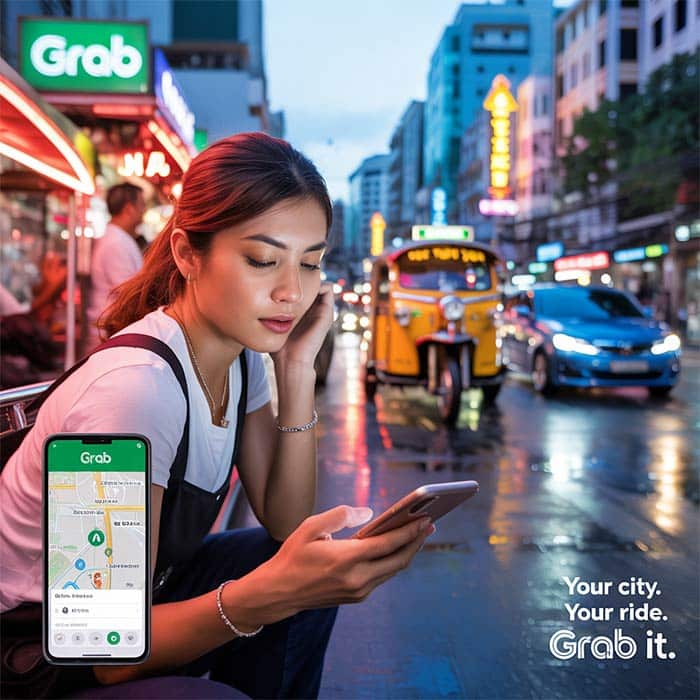
One of the safest ways to travel is by using Grab, the Thai equivalent of Uber. I use it whenever I can because it’s reliable, the pricing is clear, and I never have to worry about being overcharged. It’s especially great for solo travelers since you can track your route in real time on your phone.
Tuk-tuks can be a fun way to experience the local culture for short distances. But here’s my tip: always agree on the price before you hop in. Tuk-tuks don’t have meters, and I’ve learned that some drivers might try to charge you a lot more than it’s worth. A fair price should be negotiated upfront.
Public transportation in Thailand, like the Skytrain or the local buses, is also safe and affordable. I found that the Skytrain was my go-to method of getting around Bangkok—it’s quick, clean, and very efficient. Plus, it’s a great way to avoid the city’s notorious traffic.
When travelling by boat or ferry, like in places such as Phuket or Koh Samui, use reputable services. I always check reviews or ask locals for recommendations to ensure safety. And remember to wear your lifejacket! It’s always better to be cautious.
Cultural Sensitivity
Thailand has deep traditions, and it’s important to show respect for the culture, especially as a solo traveler. As someone who values cultural experiences, I’ve learned that awareness goes a long way in building connections and showing respect for the local people.
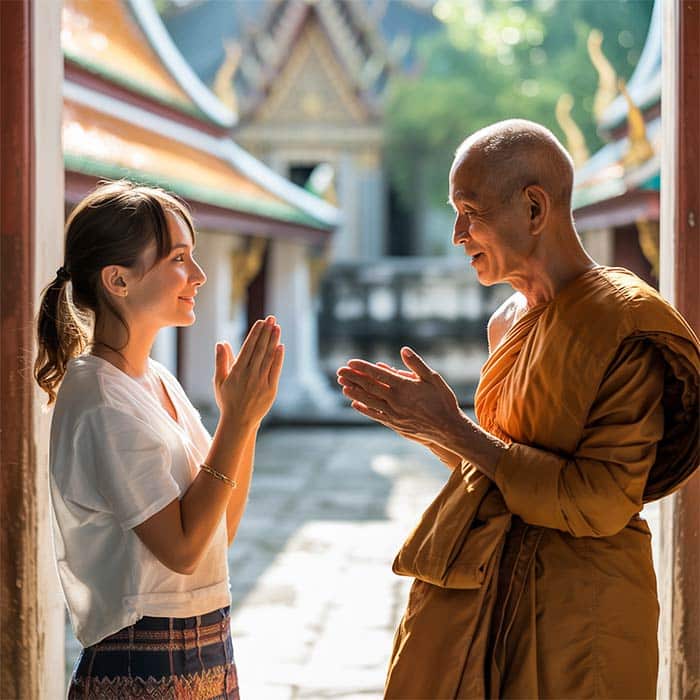
One of the most important customs to remember is the way, the traditional Thai greeting, where you press your palms together in a prayer-like position and bow your head slightly. You don’t need to do it perfectly, but it’s a nice gesture to acknowledge the local culture. I found that a simple way goes a long way, especially when entering temples or greeting locals.
When visiting temples, it’s important to dress modestly. Make sure your shoulders are covered, and if you’re wearing shorts, they’re not too short. I always carry a scarf or shawl with me in case I need to cover up, especially when I’m visiting sacred places like Wat Phra That Doi Suthep in Chiang Mai. Also, remove your shoes before entering temples or someone’s home—it’s a sign of respect.
Another thing to keep in mind is the importance of respecting elders. Thai culture highly values respect for older people, so be sure to show them the same courtesy you would show to your family.
Finally, regarding the famous Thai street food, I’ve learned that it’s an experience. I’ve spent many mornings chatting with vendors while enjoying a fresh bowl of noodles or sticky rice. If you’re unsure, don’t hesitate to ask—it’s a great way to engage with the locals and learn more about the culture.
Being mindful of cultural sensitivities enriches your trip and helps you connect more deeply with the people and places you visit. Travelling solo in Thailand is a beautiful journey, and a little respect for the culture will only enhance your experience.
How to Navigate Thailand as a Solo Traveller
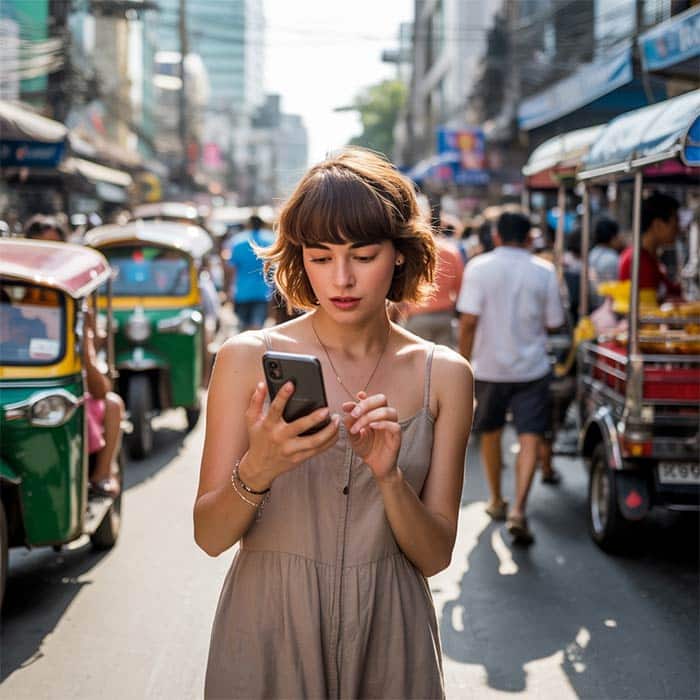
Navigating Thailand on your own can initially seem intimidating, especially if you’re unfamiliar with the language or the local customs. But let me assure you that with a few simple tips, you’ll feel comfortable and confident as you explore this fantastic country solo. I’ve got you covered, from language barriers to finding the best places to stay.
Language Barrier
When I first arrived in Thailand, I was worried about not speaking Thai. While it’s true that the primary language is Thai, English is widely spoken in tourist areas, especially in places like Bangkok, Chiang Mai, and Phuket. That said, English may not be as common outside the major tourist spots, so it’s helpful to know a few basic phrases.
Here are some useful Thai phrases I learned:
- Hello: “Sawasdee” (pronounced sah-wah-dee)
- Thank you: “Khop khun” (pronounced cop coon)
- How much?: “Tao rai?” (pronounced tao rai)
- Yes: “Chai” (pronounced chai)
- No: “Mai chai” (pronounced my chai)
Don’t be afraid to try speaking a little Thai! Even if you mispronounce something, the locals appreciate the effort. If you’re unsure, simple hand gestures or pointing to things work well.
When communication is tricky, I recommend downloading a translation app like Google Translate. It works wonders for translating signs, menus, or phrases when unsure what to say. I’ve used it many times, making life much easier!
Solo Travel Apps & Resources
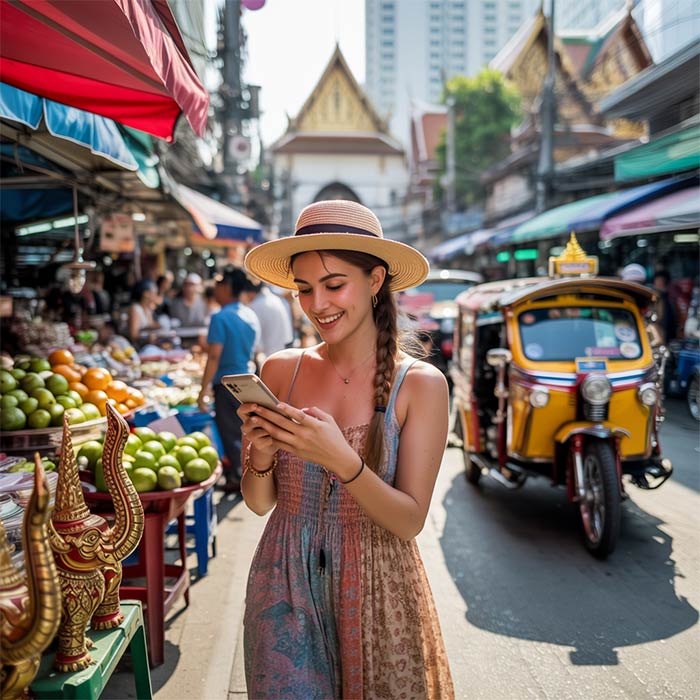
As a solo traveller, there are a few apps and resources I highly recommend to make your trip smoother and more enjoyable.
- Grab: This is the local equivalent of Uber. It’s the best way to get around safely, especially when travelling solo. It’s easy to use, and you can see the price before you book, which takes the guesswork out of taxis.
- Google Maps: This one is a lifesaver for navigating Thailand. I used it constantly to find directions, local landmarks, and even restaurants. You can download maps offline, which is super helpful when you don’t have internet access.
- TripAdvisor: If you’re looking for reviews, restaurant suggestions, or things to do, TripAdvisor is always a reliable source. I’ve used it to find great solo-friendly activities, such as cooking classes or walking tours, where I could meet other solo travellers.
- Rome2Rio: This app helps you figure out how to get from one place to another, whether by train, bus, or ferry. It’s perfect when you’re hopping between cities or islands and need help planning your route.
- Booking.com / Agoda: These apps are great for booking accommodation on the go. They show you solo traveller-friendly options, such as hostels, guesthouses, and hotels with good reviews.
Using these apps, you’ll always have the best Information. Whether for transport, food, or accommodations, these tools made my solo travels in Thailand much easier and more enjoyable.
Solo-Friendly Accommodation
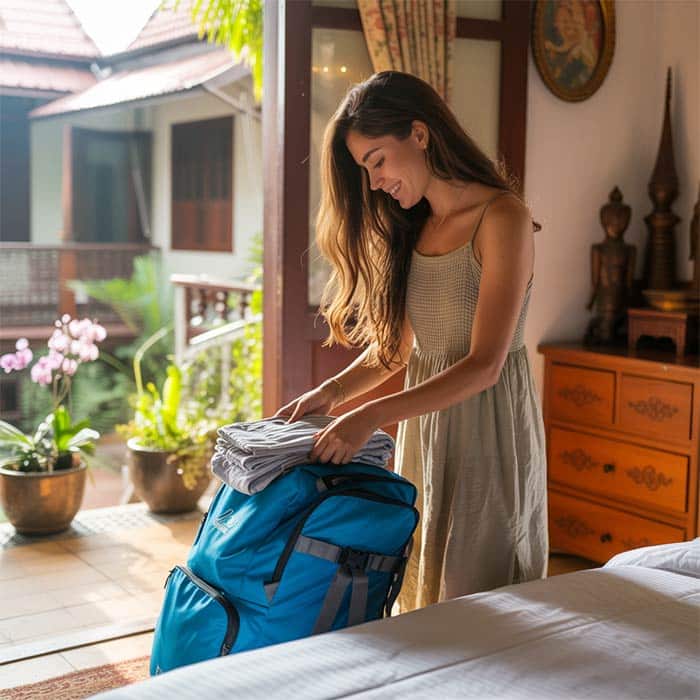
Finding the right place to stay is crucial for any solo traveller. Thailand offers a wide range of accommodation options that cater to solo adventurers. During my time there, I stayed in various places—each with its own unique vibe—and I learned that the right accommodation can make a huge difference in your experience.
- Hostels: If you’re travelling on a budget and want to meet other solo travellers, hostels are the way to go. I stayed in several throughout Bangkok and Chiang Mai, and I loved meeting fellow travellers worldwide. Hostels often organise activities like pub crawls, cooking classes, or group tours, making it easier to meet people.
- Guesthouses: Guesthouses are an excellent option for a more private experience that is still budget-friendly. They tend to be small, family-run businesses, so you’ll get to know the owners and fellow guests. I stayed in a few guesthouses in smaller towns like Pai, and they provided a more intimate, homey feel.
- Boutique Hotels: If you’re looking for more comfort, Thailand has many affordable boutique hotels. These places often have cozy atmospheres and modern amenities, perfect for unwinding after a day of exploring.
- Airbnb: If you want more privacy or want to stay in a unique, local space, Airbnb offers plenty of options in Thailand. Whether you’re looking for a private room in a local’s home or a small apartment, it’s a great choice for solo travelers who want to feel at home.
Whatever accommodation you choose, checking reviews first is always a good idea. I relied on other solo travellers’ experiences to help me select safe, comfortable, and welcoming places. And always make sure your accommodations are in a central location—close to public transport or major attractions, so you can easily explore on foot or by public transit.
Navigating Thailand as a solo traveller will be a breeze with these tips! From overcoming the language barrier to finding the best places to stay, you’ll feel prepared for whatever your adventure throws your way. Happy exploring!
Budgeting for Your Solo Trip to Thailand
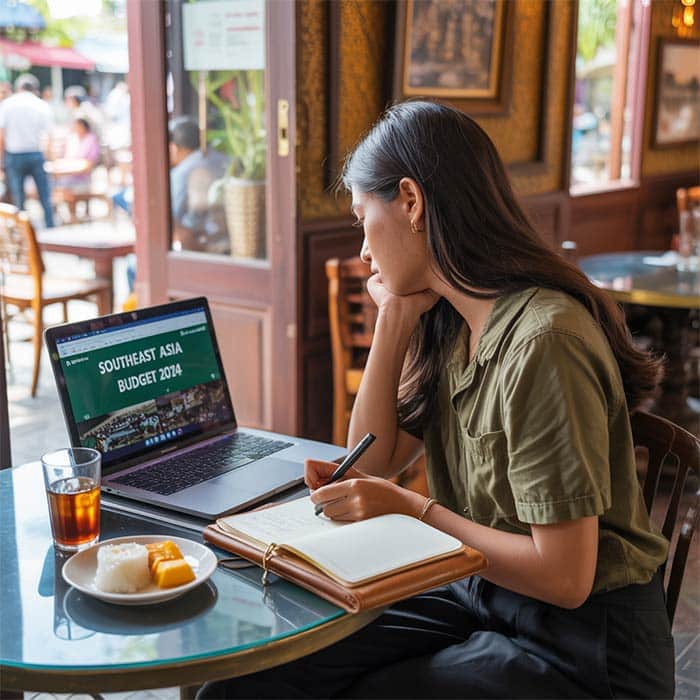
When I first considered solo travel in Thailand, one of my biggest concerns was the cost. But after spending time there, Thailand is incredibly affordable, especially compared to other travel destinations. Whether you’re backpacking on a tight budget or looking to splurge a little, Thailand offers a wide range of options to suit every travel style. Here’s how to make the most of your budget while enjoying everything this amazing country offers.
Affordability
One of the best things about travelling solo in Thailand is how far your money can stretch. Thailand is known for being a budget-friendly destination, even in popular tourist spots like Bangkok and Chiang Mai. As a solo traveller, you can easily stick to a tight budget without compromising on experiences. The cost of food, transportation, and accommodations is all incredibly affordable, which means you can enjoy more while spending less.
For example, street food, which is absolutely delicious in Thailand, costs just a few dollars for a hearty meal. And don’t get me started on the fresh fruit—you can grab a refreshing mango or coconut for less than a dollar. Whether you’re enjoying a traditional Thai curry or grabbing a quick snack at a market, you’ll find that eating out is both affordable and an essential part of the experience.
Accommodations are also surprisingly cheap. Hostels, guesthouses, and even boutique hotels offer great value for the price. Depending on where you stay, you could find a clean, comfortable room for around $10–$30 per night.
Daily Budget Breakdown
When planning your budget for a solo trip to Thailand, it’s helpful to break it down into categories to give you a clearer idea of what you can expect to spend each day. Here’s a sample daily budget based on my experience:
- Accommodation: $10–$30 per night for a budget-friendly option like a hostel or guesthouse.
- Meals: $10–$20 for three meals a day, depending on where you eat. Street food can cost as little as $1–$3 per meal, but if you decide to eat at restaurants or cafes, expect to pay more.
- Transportation: $5–$10 per day. This covers public transport like tuk-tuks, taxis, or the Skytrain in Bangkok. Long-distance travel (buses or trains between cities) might cost a little more, but it’s still affordable.
- Activities & Sightseeing: $10–$20 per day for activities like visiting temples, exploring markets, or participating in cultural activities (cooking classes, guided tours). Some temples and attractions are free or have a minimal entrance fee.
For a budget-conscious solo traveller, you can expect to spend around $35–$60 per day, depending on your choice of accommodation and activities. Suppose you want to splurge on a few nicer meals, activities, or accommodations. In that case, you can expect to spend a little more, but the country still offers excellent value for what you get.
Money-Saving Tips
Thailand is a destination where you don’t have to break the bank for an unforgettable trip.
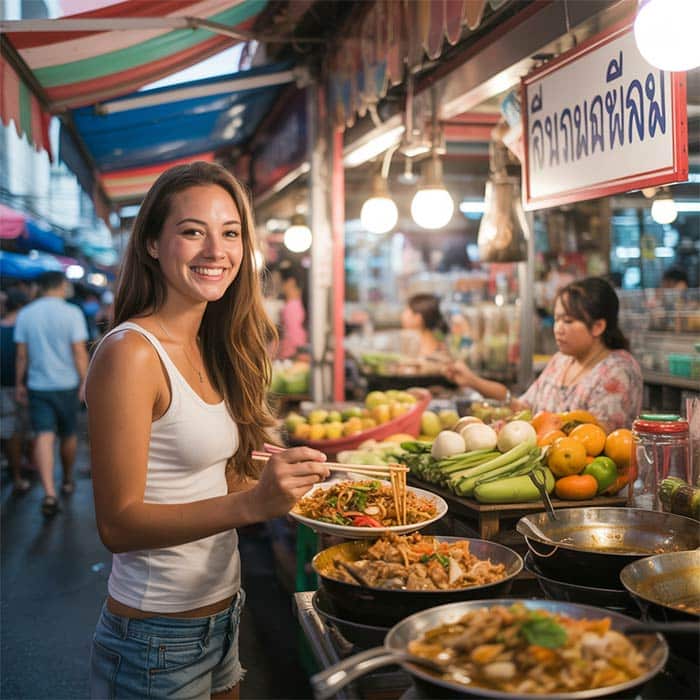
- Eat like a local: Street food in Thailand is fantastic and cheap. Skip the fancy restaurants and dive into the local food scene. A bowl of noodles or a fresh fruit smoothie from a street vendor will cost you a fraction of the price and still fill you with delicious, authentic flavours.
- Use public transport: Instead of relying on taxis, use the Skytrain in Bangkok or local buses for affordable transportation. Tuk-tuks can be fun, but always negotiate the price beforehand to avoid paying too much.
- Book in advance: Booking can often save money on popular activities and accommodations. Websites like Booking.com, Agoda, and Hostelworld offer great deals, especially for solo travellers seeking budget options.
- Stay in hostels or guesthouses: These are affordable and a great way to meet fellow solo travellers. I’ve made so many new friends at hostels, which also often organise activities like city tours or group meals.
- Take advantage of free activities: Many of Thailand’s most beautiful attractions are free or cheap. Visiting temples, walking around the old city in Chiang Mai, or exploring local parks costs nothing. Additionally, Thailand has beautiful beaches that you can enjoy for free!
- Negotiate prices: Haggling is part of the shopping experience in many markets. Don’t be afraid to negotiate for a better price on everything from souvenirs to transportation. I’ve always managed to get a discount by politely bargaining.
- Avoid tourist traps: When in touristy areas, be cautious of places that cater primarily to tourists and charge inflated prices. Look for places where locals go to eat or shop—it’ll save you money and give you a more authentic experience.
Cultural Etiquette and Customs in Thailand
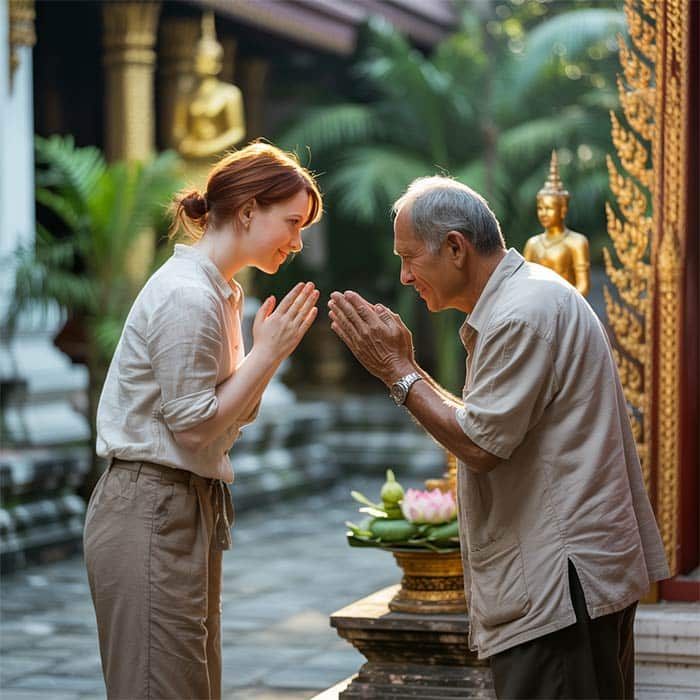
Understanding and respecting local customs is essential for a smooth and enriching solo travel experience in Thailand. Thai culture is deeply rooted in traditions, and knowing a few basic cultural etiquette rules can help you connect with locals and avoid unintentionally offending anyone. Here are a few key cultural practices to remember while exploring this beautiful country.
Respect for Monks and Temples
In Thailand, Buddhism plays a significant role in daily life, and monks are revered figures. When visiting temples or encountering monks, it is essential to show respect and follow a few simple rules.
First, always greet monks with respect. If you’re a woman, avoid touching a monk, especially if he’s seated or walking. While some temples are more relaxed about this, it’s better to be cautious. Never pass anything to a monk directly—use an intermediary (like a staff member or another person) if necessary.
When entering temples, remove your shoes before stepping inside. This is a sign of respect; you’ll see this practice everywhere in Thailand. Even in temples, where many people are tourists, I noticed that taking off shoes was part of the experience and added to the spiritual atmosphere.
Additionally, when visiting temples, take time to quietly appreciate the beauty and serenity of the place. Many temples are places for reflection and prayer, so be mindful of your noise level and behaviour. Spending time in these peaceful spaces was one of the most meaningful parts of my trip.
Dress Code
Thailand is generally a casual destination, but when visiting religious sites or temples, dressing modestly is a sign of respect. You’ll be required to cover your shoulders and knees in many places, so it’s a good idea to pack clothes that can easily be adjusted to suit temple visits.
For women, it’s common to wear dresses, skirts, or pants that cover the knees and tops that cover the shoulders when entering temples. I always carried a scarf or shawl in my bag to throw over my shoulders when needed. It’s a small effort that goes a long way in showing respect to local customs.
Men should also avoid wearing sleeveless shirts or shorts in temples. A simple t-shirt, long pants, or lightweight trousers are perfect for temple visits.
Thailand is very laid-back when in cities or on the beach, and you’ll see people wearing casual, comfortable clothes. But be respectful when visiting religious or formal settings—this applies not only to temples but also to royal palaces and other sacred sites.
Tipping Culture
In Thailand, tipping is appreciated but not mandatory. Unlike some countries where tipping is expected, Thai people do not rely on tips as a significant part of their income. However, leaving small tips for excellent service is a nice gesture and always well received.
In restaurants, if the service charge is not included in the bill, leaving a tip of around 10% is common. Tipping is not expected for smaller meals or street food, but rounding up the bill or leaving spare change is always appreciated.
When staying at hotels or hostels, I usually leave a small tip for housekeeping—about 20–50 baht (less than $2), depending on the service. This small amount can go a long way in showing appreciation for good service. Leaving tips for guides, drivers, or people who help you during tours or activities is common. I found that, in general, people are very grateful for any extra gestures of kindness.
For taxi or tuk-tuk drivers, rounding up the fare is a nice way to show your appreciation. If you’ve had a particularly great experience with a driver, you can also give a small tip.
Overall, tipping in Thailand is not about the amount but showing gratitude for good service. It’s a small way to make someone’s day and add a personal touch to your interactions with locals.
Conclusion
Thailand is the perfect destination for solo travellers, offering a mix of adventure, culture, and relaxation. From vibrant cities like Bangkok to peaceful spots like Chiang Mai and Phuket, Thailand’s friendly locals and rich traditions make it an ideal place to explore independently.
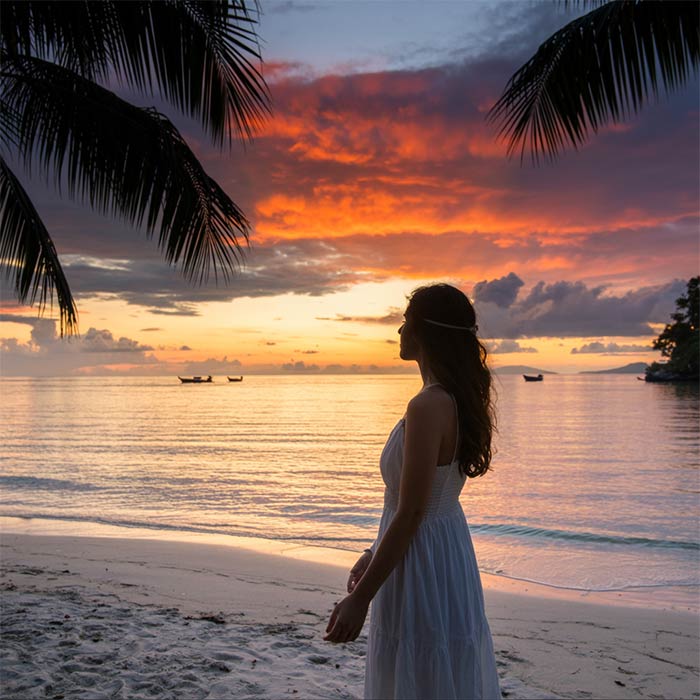
In this guide, we’ve covered everything from top destinations and safety tips to cultural etiquette. Navigating Thailand solo can be an easy and rewarding experience with a bit of preparation.
So, get ready to pack your bags and dive into the beauty of Thailand. Your solo adventure awaits!
FAQs
1. Is Thailand safe for solo travellers?
Yes, Thailand is generally safe for solo travellers. The country is known for its friendly locals and low crime rate. However, it’s always important to stay aware of your surroundings and follow basic safety precautions, especially in busy areas.
2. What’s the best time to visit Thailand as a solo traveller?
The best time to visit Thailand is between November and February, when the weather is cool and dry. This is ideal for exploring and enjoying outdoor activities. If you want to avoid the wet weather, avoid the rainy season (June to October).
3. Can I travel to Thailand solo on a budget?
Absolutely! Thailand is one of the most affordable destinations for solo travellers. With affordable street food, budget accommodation, and low-cost public transport, you can easily travel on a budget while still enjoying all the experiences the country has to offer.
4. Do I need to speak Thai to travel in Thailand?
While speaking Thai can be helpful, especially in rural areas, English is commonly spoken in touristy places. Learning a few basic phrases can go a long way and help you connect with locals.
5. Is Thailand solo-friendly for female travellers?
Yes, Thailand is generally safe and welcoming for solo female travellers. Many women travel solo to Thailand every year. Just take the usual precautions, such as avoiding isolated areas at night and being cautious with your belongings.
6. Are there any specific cultural customs I should be aware of?
Yes, Thailand has unique customs, such as the wai greeting (pressing palms together) and removing shoes before entering temples. Dressing modestly when visiting temples and respecting monks and elders are also important. Understanding and respecting these cultural practices will enhance your experience.
7. How do I get around Thailand as a solo traveller?
Public transport in Thailand is easy to use and affordable. You can rely on taxis, tuk-tuks, the Skytrain in Bangkok, and boats to get around. Apps like Grab (Uber’s Thai counterpart) are very helpful for solo travellers, as they offer a safe and convenient way to travel.
8. What should I pack for a solo trip to Thailand?
Pack light and focus on comfortable clothing suitable for hot weather. Don’t forget sunscreen, a hat, a reusable water bottle, and a power bank. If you plan to visit temples, carry a scarf or shawl to cover your shoulders and knees. A good pair of walking shoes is also essential for exploring.
9. How much money do I need for a solo trip to Thailand?
On average, you can expect to spend around $35–$60 per day on a budget, depending on your accommodation and activities. Luxury travel options will cost more, but Thailand offers something for every budget.
10. Can I use credit cards in Thailand?
Credit cards are widely accepted in cities and larger tourist areas, especially in hotels, restaurants, and shopping malls. However, carrying cash for smaller purchases or in more rural areas is a good idea. ATMS are widely available for cash withdrawals.

